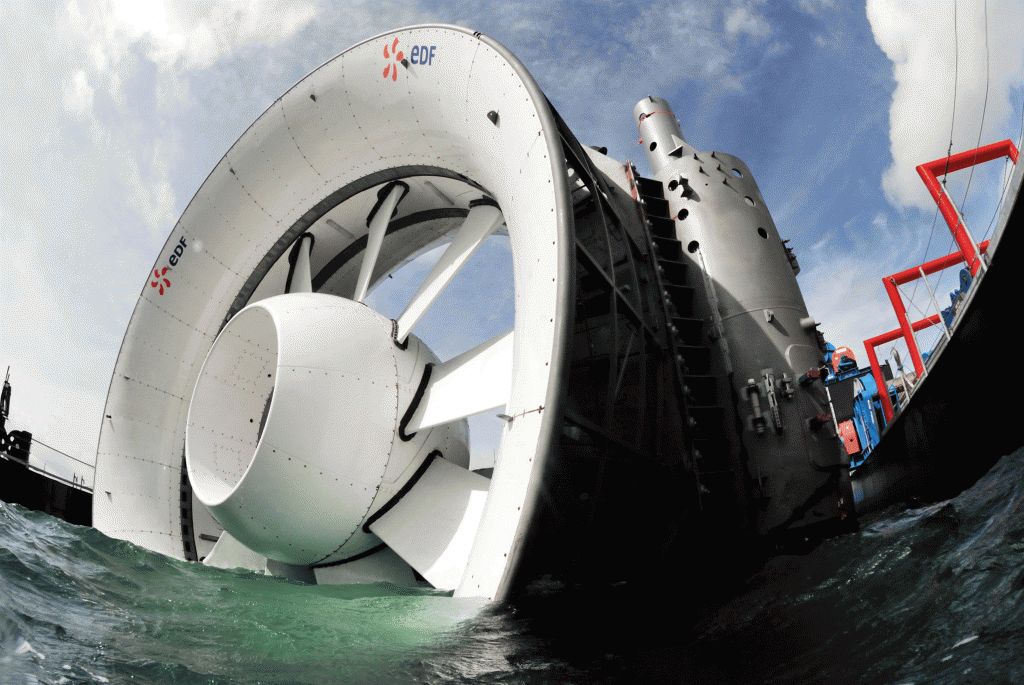

Atpresent most hydrogen is produced from natural gases and fossil fuels, whichemit greenhouse gases into the atmosphere and harm the global ecosystem.

However, in order to realize this ideaworldwide, clean hydrogen fuel would need to be also available everywhere. Many scientists and engineers consider such a development as afuture new industrial revolution. Fuel cells convert hydrogen energy directly into electricitywithout combustion or moving parts, which is then used, for instance, inelectric cars. The hydrogen, liquefied or stored by another method, can be transported anywhere tobe used either as a fuel instead of oil or gasoline or in various fuel cellenergy systems. An attractive future option is to utilize the tidal power in situ for year-round production of hydrogen fuel by electrolysis of the water. However, powerfrom a tidal plant would then have to be transmitted a long distance becauselocations of high tides are usually far away from industrial and urban centers. In countries with a well-developed power industry, tidal powerplants can be a part of the general power distribution system. Tides are cyclical by their nature, and the corresponding power outputof a tidal power plant does not always coincide with the peak of humanactivity. Gorlov, in Encyclopedia of Ocean Sciences, 2001 Utilizing Electric Energy from Tidal Power PlantsĪ serious issue that must be addressed ishow and where to use the electric power generated by extracting energy from the tides.


 0 kommentar(er)
0 kommentar(er)
